OCTOBRE 61 / Éric Manigaud
from May 5th to June 16th 2018
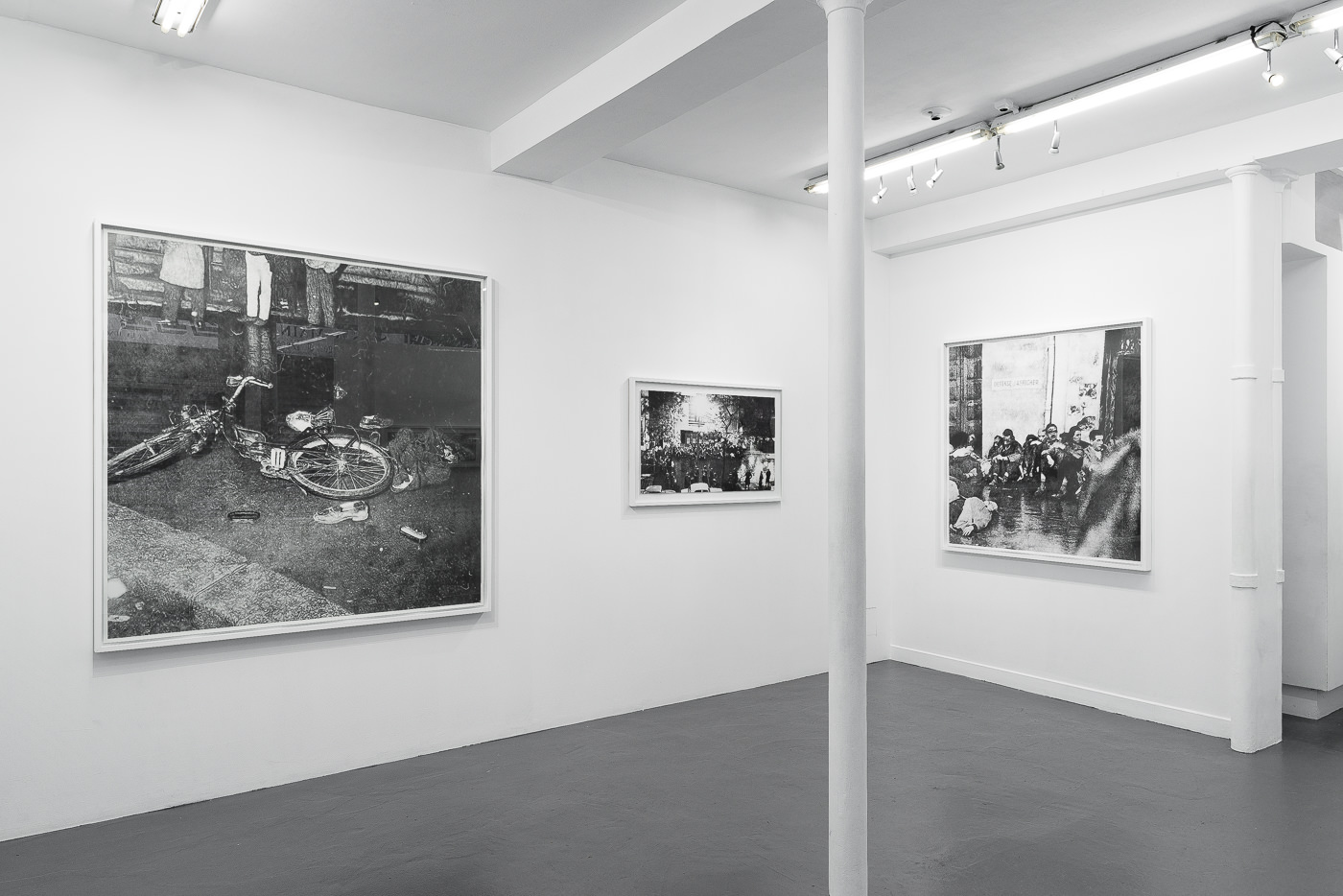
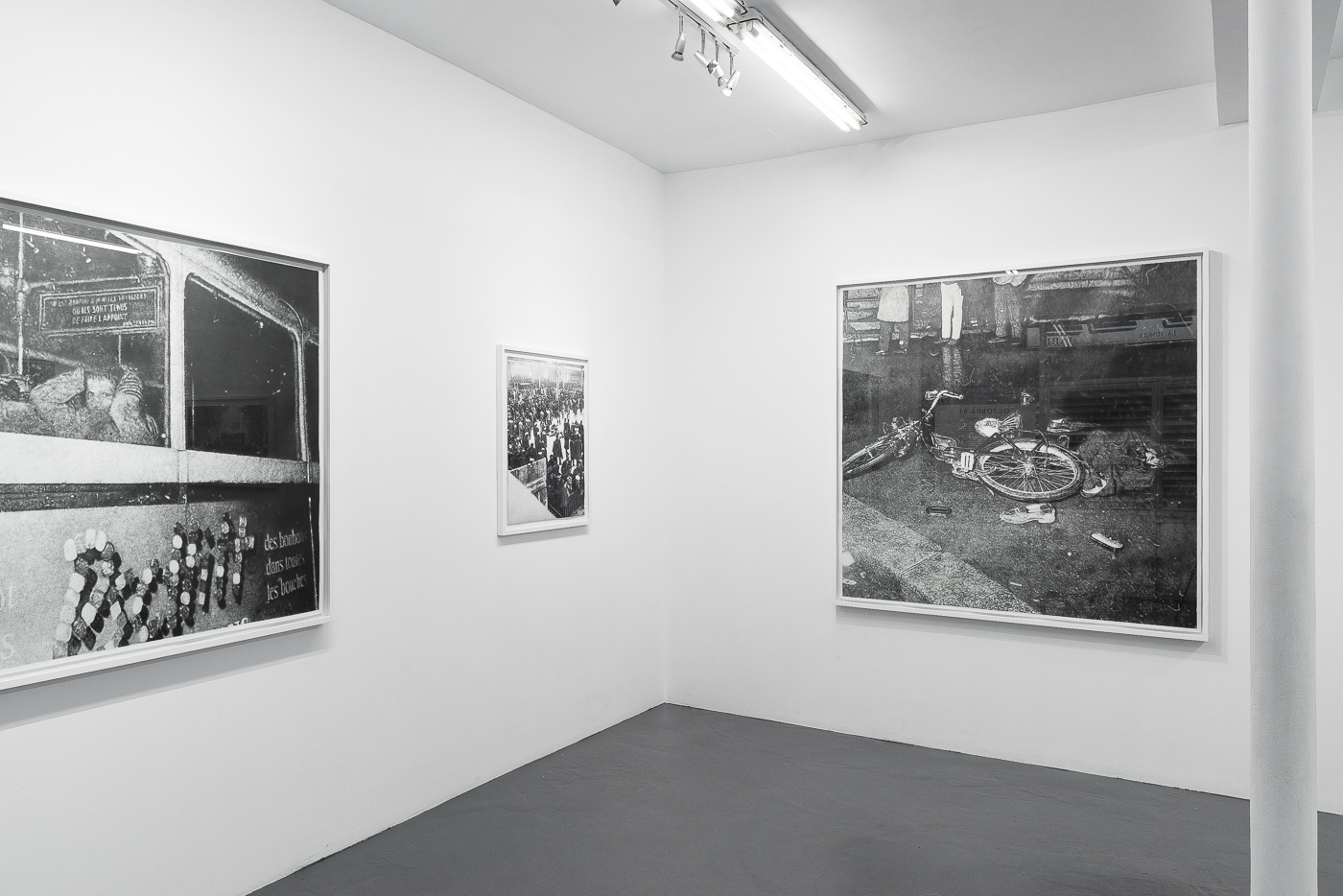
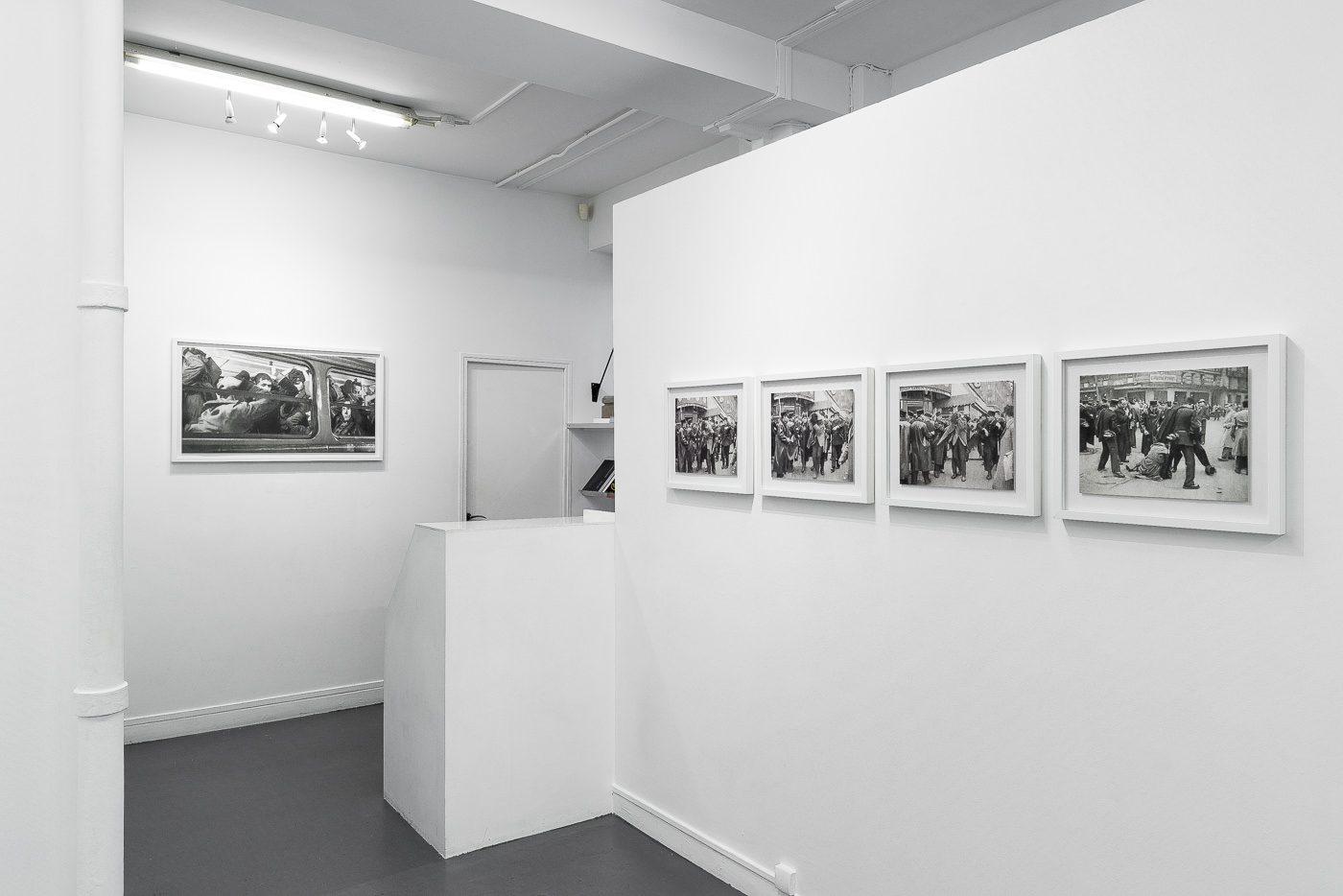
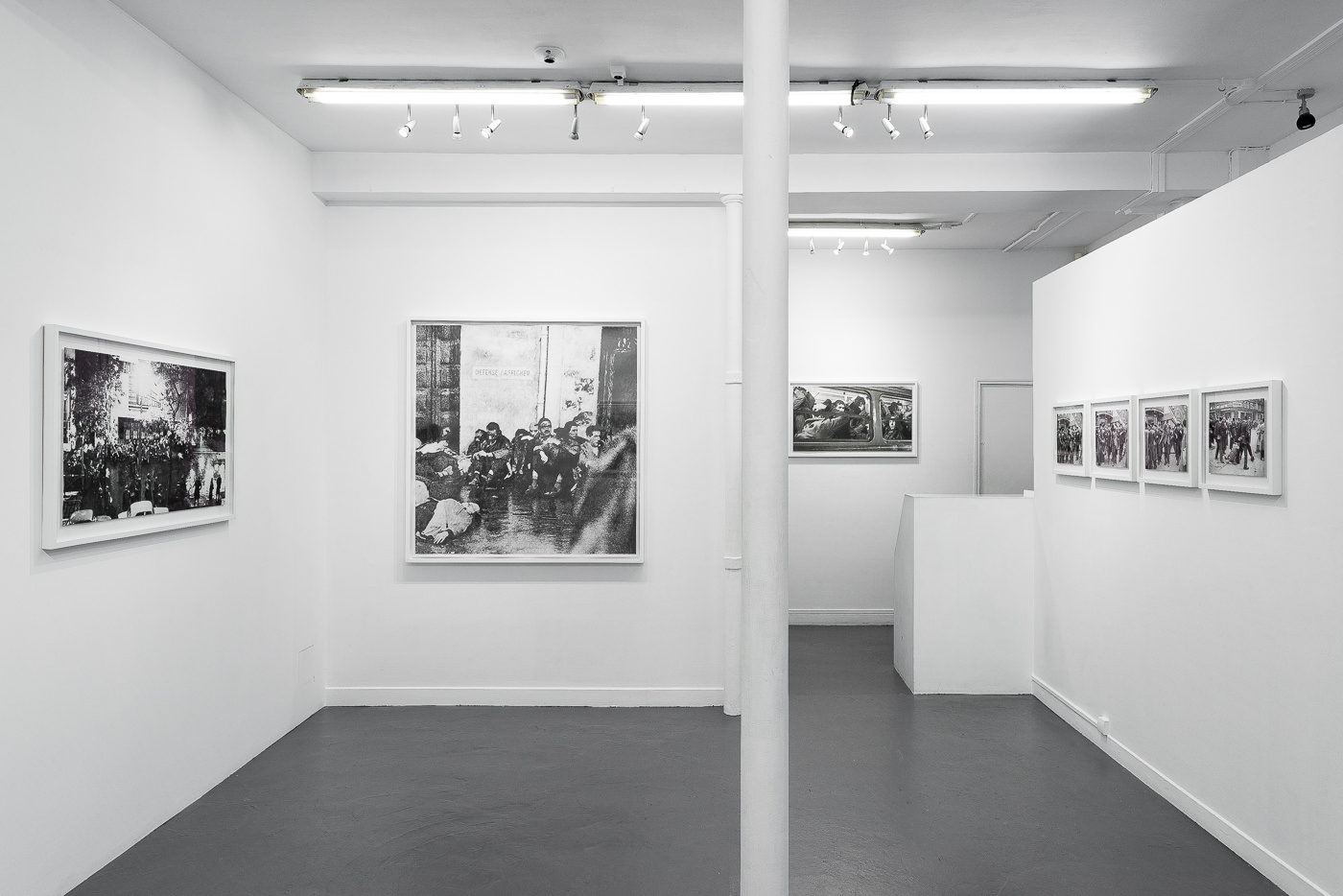

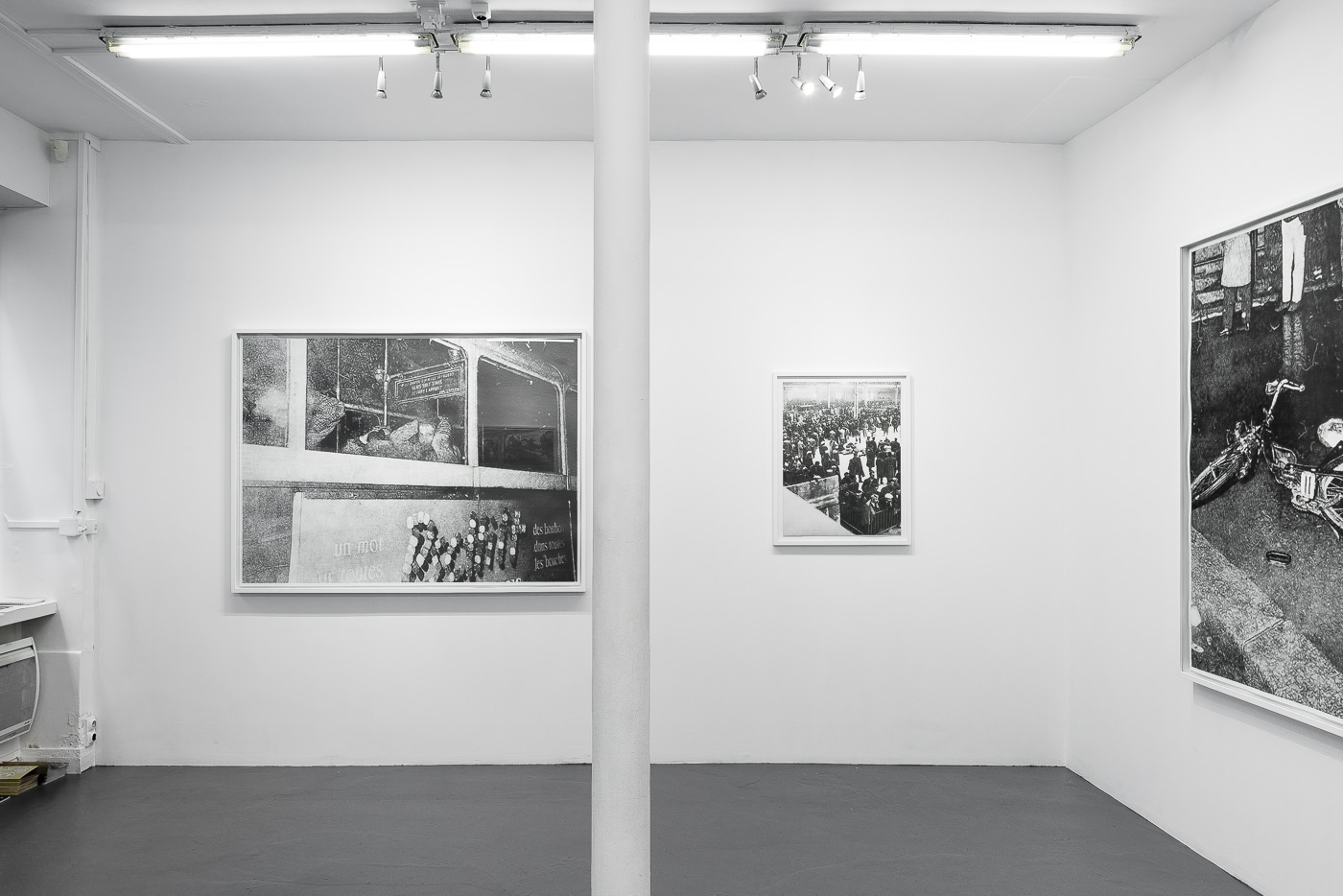
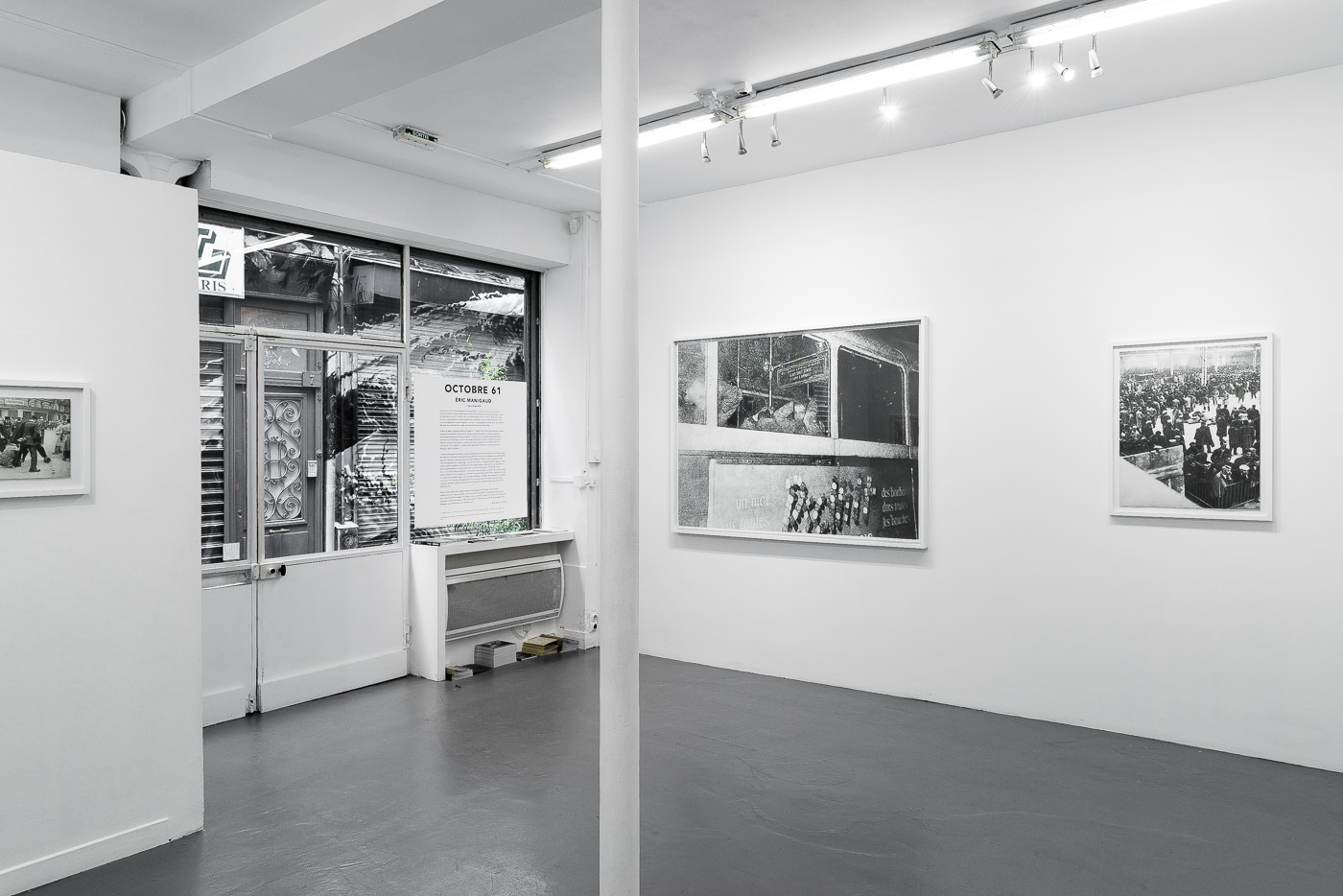
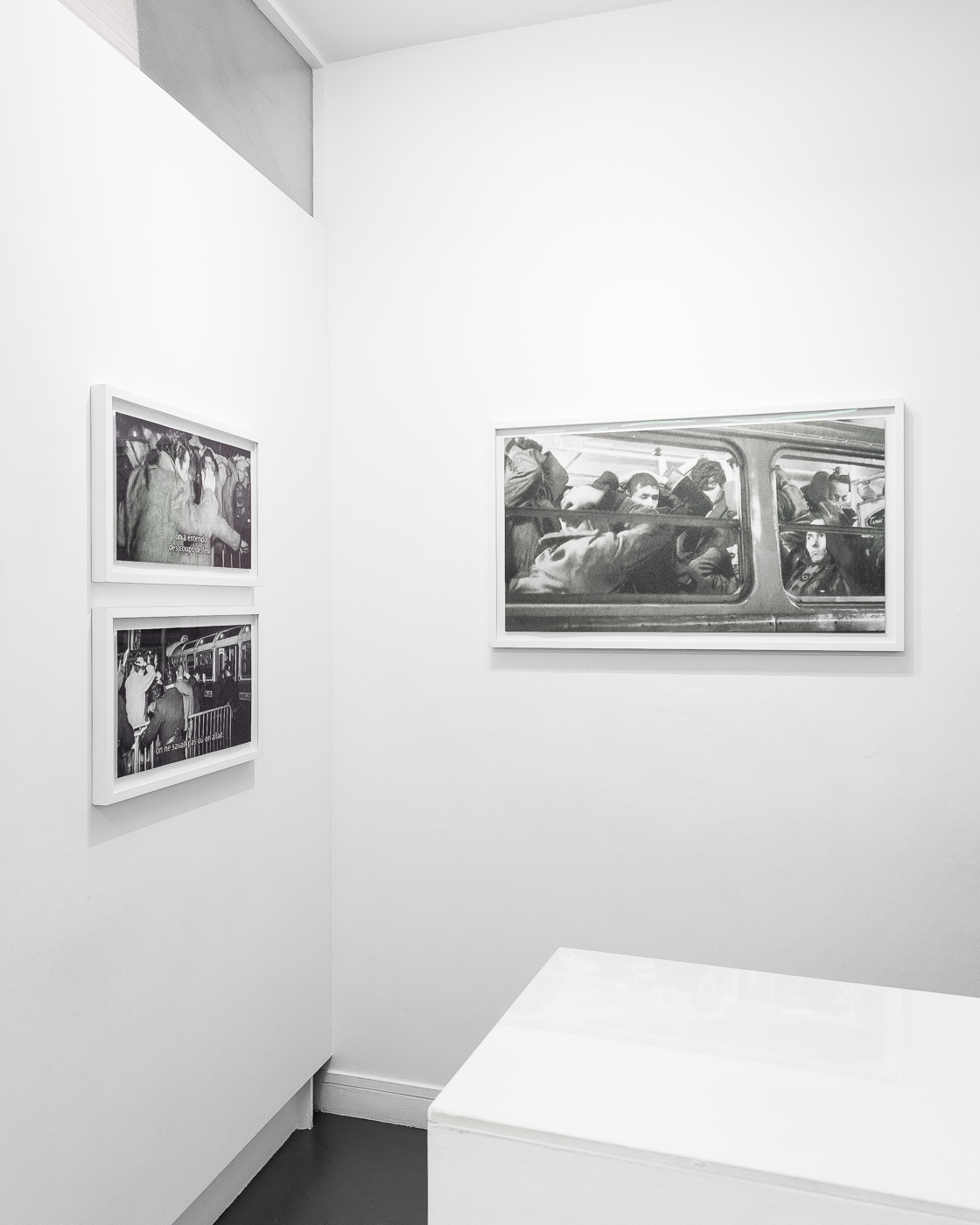
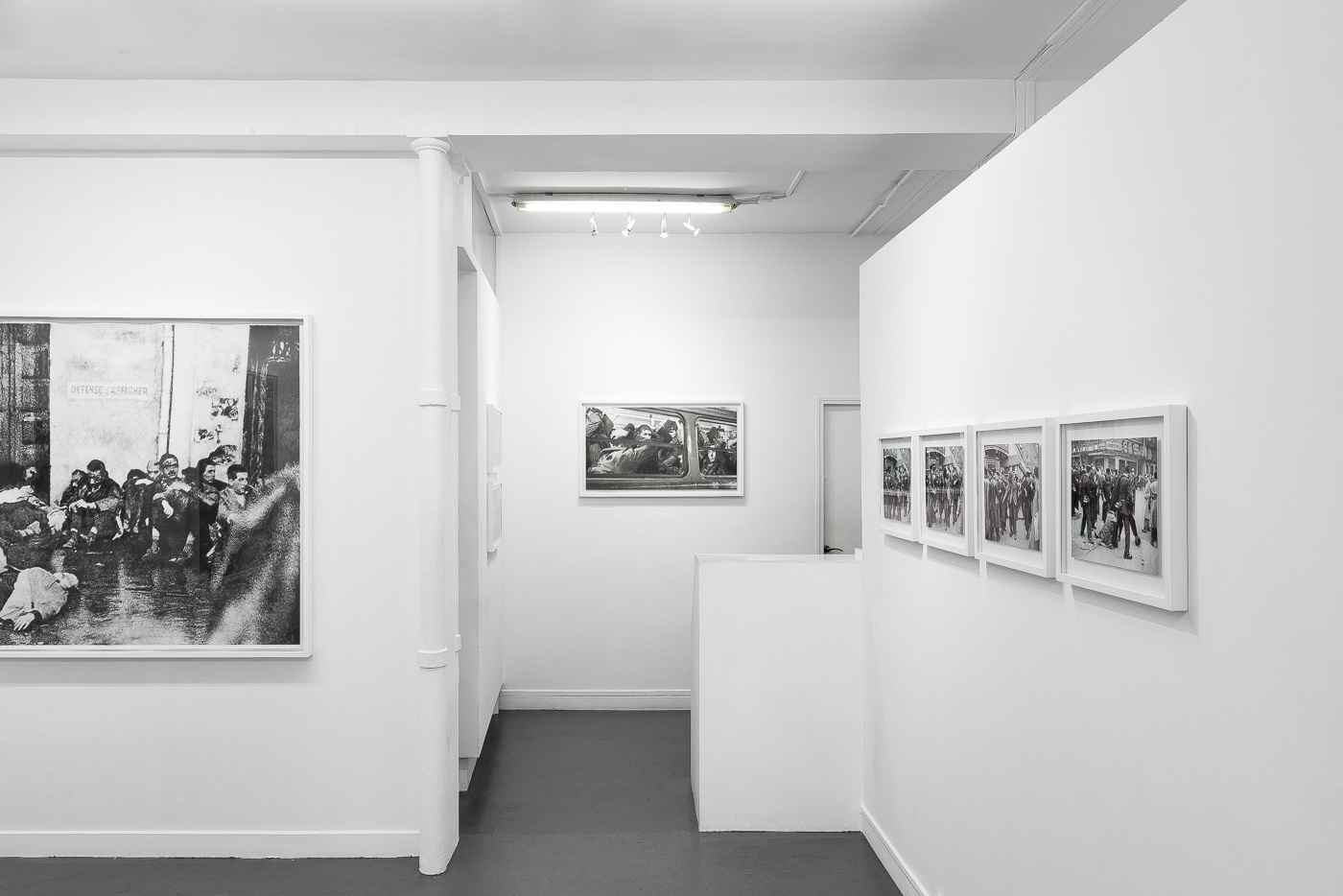
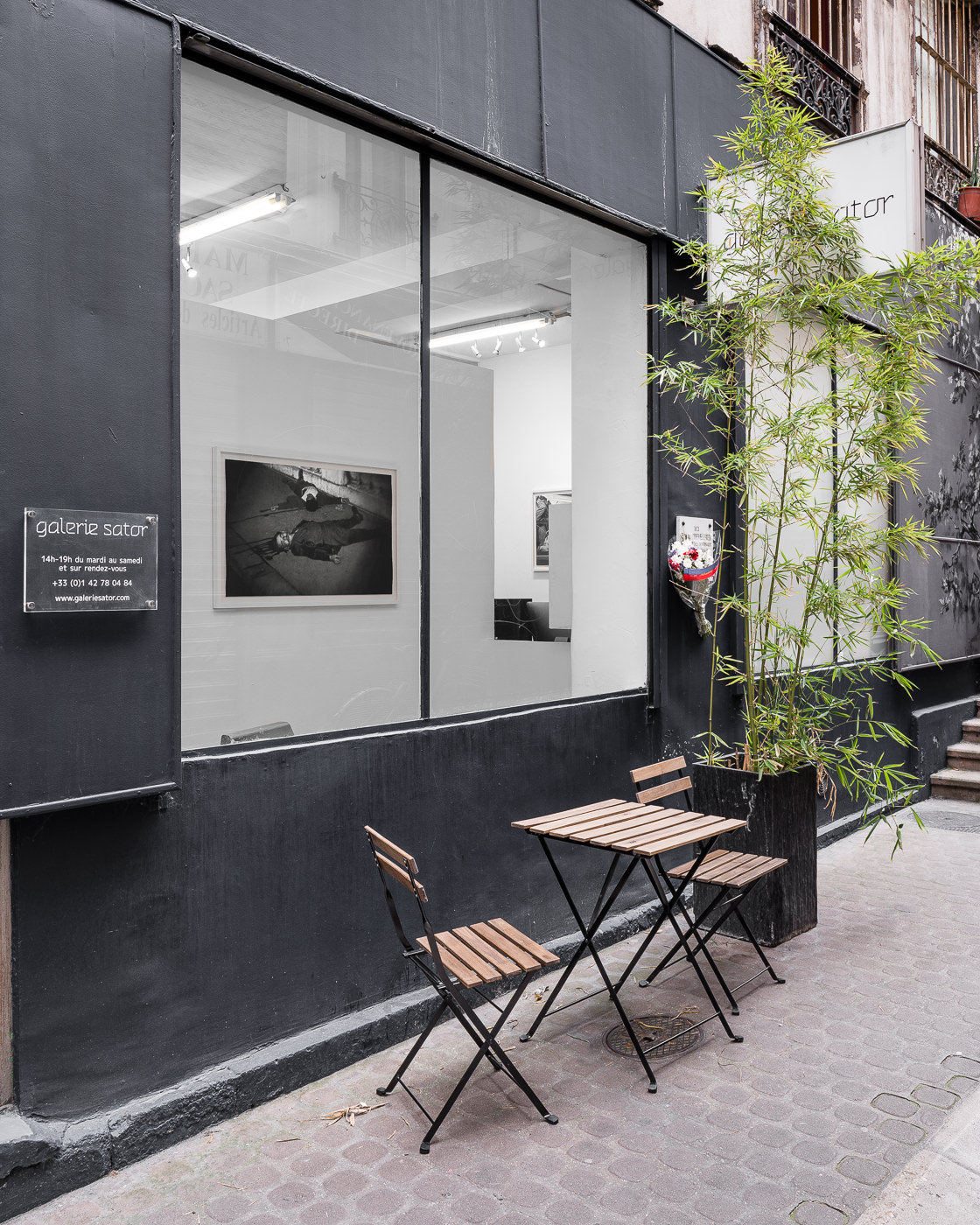
Éric Manigaud is known for his drawings created using archival photographs. Working in series, he dedicates his work to historical subjects including the facially disfigured soldiers of the First World War, the bombed-out cities of the Second World War, early 20th century crime scenes, and spirit photography from the 1920s and the 1930s.
In this series, Éric Manigaud has turned his attention to the protests by Algerians that took place in Paris in October 1961 and which were violently repressed by the French police. Using photographs by Georges Azenstarck, Elie Kagan and Georges Méanger, and a film by Jacques Panijel, Éric Manigaud has worked to show one of the darkest chapters of recent French history.
Stopping to contemplate the large drawing based on a photograph by Georges Azenstarck, we might recall the formula once used to describe daguerreotypes: “mirrors that remember.” It is the evening of 17th October 1961, and it is raining. The wet tarmac is like a mirror, and the centre of the image is empty. The photographer has increased his film’s sensitivity, creating a shine, a lustre that the artist’s drawing retains. There once existed a photography magazine entitled Le miroir: photography as the mirror of what was. Éric Manigaud places us within images as if they were memories of otherwise forgotten events.
The series of drawings presented here reworks images from Paris on 17th October 1961: press photographs or unique images such as that taken by Georges Azenstarck, as well as photographs recreated by Jacques Panijel for his film “Octobre à Paris” from existing shots, in particular those of Elie Kagan. It is as if these images were created to lend existence to an event that the collective memory had either censored or confused with another massacre, that of 8th February 1962. By reconstituting the lost film of 17th October, Panijel played the role of the historian; by doubling them, Éric Manigaud here plays the role of the analyst.
As well as press photographs, four photograms from Panijel’s film have been reworked as drawings for the exhibition. These four photograms form a micro-sequence, with the drawings showing a scene of police violence as it unfolds, from a standing man to a man on the ground. In the film, the sequence runs at 24 images/second; the drawings fix this movement. The paper retains the graphite traces as if it could temporarily freeze the gaze of the viewer. A similar technique is used in the drawings featuring subtitles. Here, the scene takes place behind a security barrier: a man raises his arms, with a truck behind him in the background. The subtitles read “we heard shots”, “we didn’t know where we were going.” The text becomes image. Other drawings show a sign or a poster; that the work’s title is drawn from such a poster confirms the importance of these image-texts: “nuit des vendanges”, “the night of the grape harvests.” Others still respond to the question “where are we going?”: we are going to an exhibition centre on the edge of the city, we are going to a dock by the Seine. We recognize these old buses, a sense of déjà vu prompted by the sight of these men that we can make out through the bus windows, hands on their heads.
Freeze frame on a drawing created after a photograph by Elie Kagan. Near frontal, here is the objectivism of an image without pathos, a means of returning to a past which refuses to pass, and instead appears in the present moment of the drawing itself; the objectivism of a drawing to study, or, at the risk of using a hackneyed word, to contemplate (in the sense of ‘templum’), in an “effort of memory”*. As in other series of drawings by Éric Manigaud, we stand here before a crime scene.
Daniel Boitier, March 2018
*I am borrowing here the expression used by Dionys Mascolo in the title of his book on Robert Antelme, Autour d’un effort de mémoire.
Éric Manigaud wishes to thank Elie Kagan’s family as well as Cyril Burté and the “BDIC” for their precious help in this project.
press release - FR (PDF)
press kit - FR (PDF)
press review (PDF)